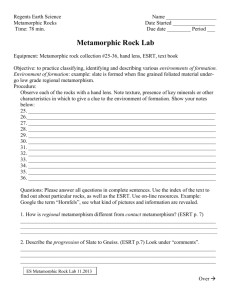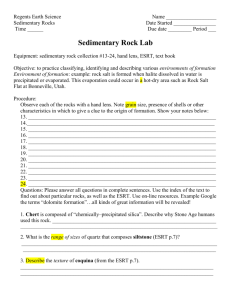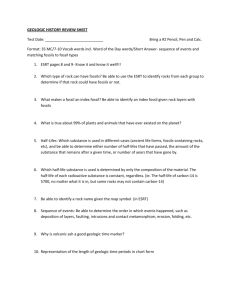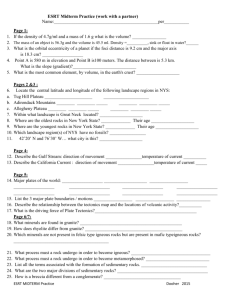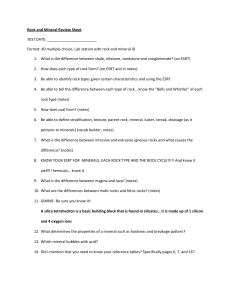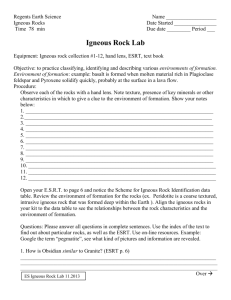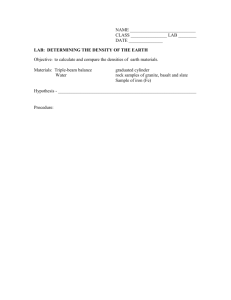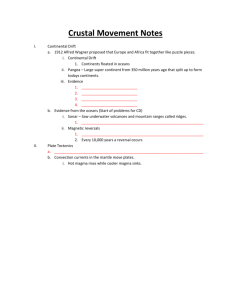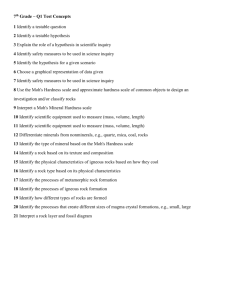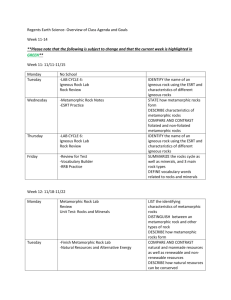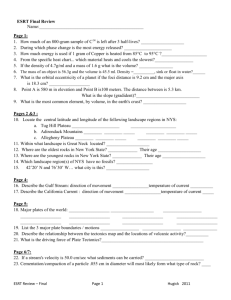Midterm Review Sheet - Red Hook Central School District
advertisement
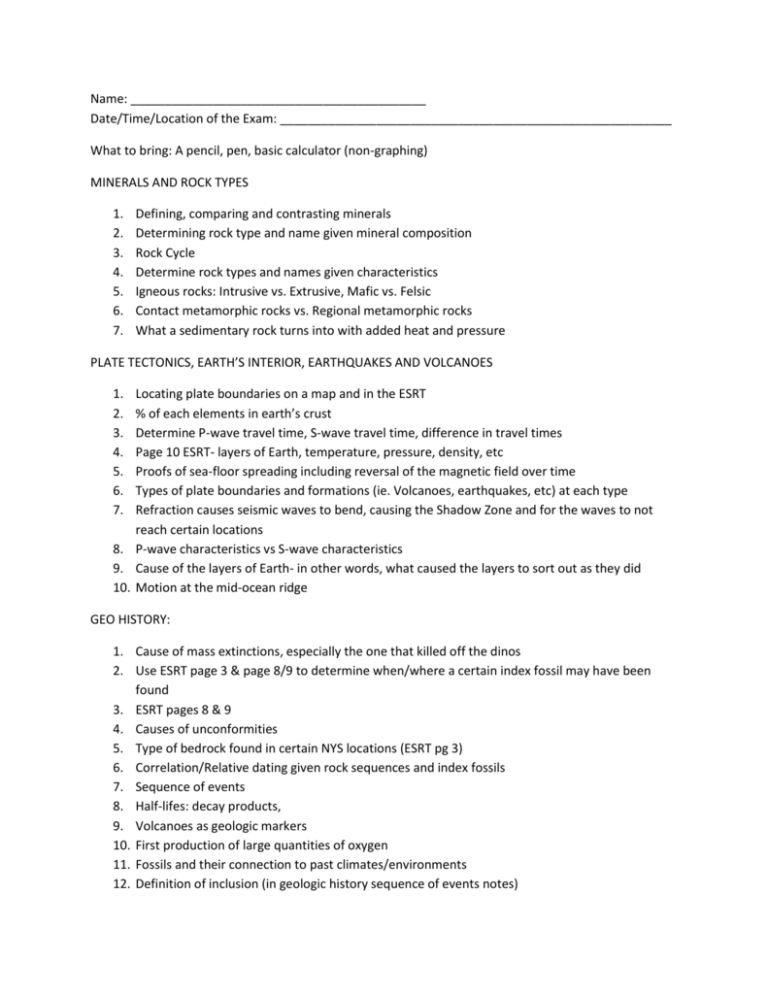
Name: ___________________________________________ Date/Time/Location of the Exam: _________________________________________________________ What to bring: A pencil, pen, basic calculator (non-graphing) MINERALS AND ROCK TYPES 1. 2. 3. 4. 5. 6. 7. Defining, comparing and contrasting minerals Determining rock type and name given mineral composition Rock Cycle Determine rock types and names given characteristics Igneous rocks: Intrusive vs. Extrusive, Mafic vs. Felsic Contact metamorphic rocks vs. Regional metamorphic rocks What a sedimentary rock turns into with added heat and pressure PLATE TECTONICS, EARTH’S INTERIOR, EARTHQUAKES AND VOLCANOES 1. 2. 3. 4. 5. 6. 7. Locating plate boundaries on a map and in the ESRT % of each elements in earth’s crust Determine P-wave travel time, S-wave travel time, difference in travel times Page 10 ESRT- layers of Earth, temperature, pressure, density, etc Proofs of sea-floor spreading including reversal of the magnetic field over time Types of plate boundaries and formations (ie. Volcanoes, earthquakes, etc) at each type Refraction causes seismic waves to bend, causing the Shadow Zone and for the waves to not reach certain locations 8. P-wave characteristics vs S-wave characteristics 9. Cause of the layers of Earth- in other words, what caused the layers to sort out as they did 10. Motion at the mid-ocean ridge GEO HISTORY: 1. Cause of mass extinctions, especially the one that killed off the dinos 2. Use ESRT page 3 & page 8/9 to determine when/where a certain index fossil may have been found 3. ESRT pages 8 & 9 4. Causes of unconformities 5. Type of bedrock found in certain NYS locations (ESRT pg 3) 6. Correlation/Relative dating given rock sequences and index fossils 7. Sequence of events 8. Half-lifes: decay products, 9. Volcanoes as geologic markers 10. First production of large quantities of oxygen 11. Fossils and their connection to past climates/environments 12. Definition of inclusion (in geologic history sequence of events notes) MAPPING AND GRAPHING RELATIONSHIPS 1. 2. 3. 4. 5. 6. 7. Topography: Determine highest elevation, Polaris and latitude Latitude and longitude using the ESRT or a map Reading values off an isoline map Draw a Topographic Profile Plot points on a graph then state the type of relationship (direct, inverse, etc) Determine the rate of change given data
